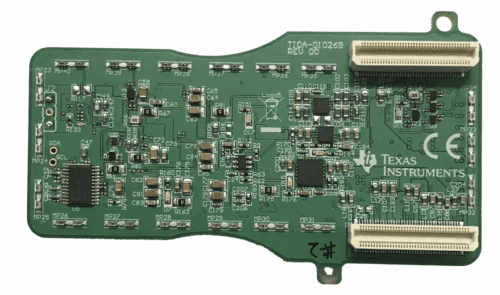The design runs 128-channel ultrasound probes using power. It gives images, works from USB power, stays small, and scans without cooling.

The TIDA-010269 reference design powers a 128-channel ultrasound smart probe using Texas Instruments’ transmitter and receiver technologies. It includes a power system, delivering over 80% efficiency. The design uses a transformerless high-voltage power supply with a boost regulator, enabling it to meet the demands of smart probe applications.
The system operates from a 5V USB Type-C input, provided by mobile phones, notebooks, or desktops. This input supports both high-voltage and low-voltage power generation. The high-voltage section supplies power to the transmitter, while the low-voltage section powers the analog front ends (AFEs), FPGA, USB controller, and clock circuits.
Each low-voltage rail uses a DC/DC converter followed by a low-dropout regulator (LDO). The LDOs reduce noise, improving the power supply rejection ratio (PSRR), which is important for ultrasound images. Regulators manage power distribution. Current monitoring uses INA231 devices, allowing control of power consumption across subsystems.
Cart-based ultrasound machines rely on systems with many channels for imaging. Smart probes now offer similar performance in a smaller form. These devices use the processing of mobile phones or tablets to handle image processing and display.
Advances in ultrasound analog front ends and transmitter technology have reduced the size and power needs of smart probes. Power and size are reduced by more than 80%, allowing more channels without exceeding battery system limits. By supporting 128 transmit and 64 receive channels, this reference design improves image resolution while maintaining power operation.
Portable designs often use 16 or 32 channels due to power limits. They require multiplexers to drive 128 transducer elements, which reduces image quality and slows frame rates. The reference design addresses these limits by allowing more channels, leading to sharper images and faster scanning.
With this design, smart probes can deliver imaging in areas where machines are impractical. These systems provide diagnostic solutions, improving access to imaging in rural and underdeveloped regions. Lower cost and portability make it possible for healthcare providers to carry smart probes as part of their equipment, expanding the reach of ultrasound diagnostics.
As technology advances, the use of smart probes is expected to grow. Many units may be deployed, providing doctors and healthcare workers with visual and audio insights into the body. This can lead to faster diagnoses, improved care, and wider adoption of point-of-care ultrasound systems alongside machines.
TI has tested this reference design. It comes with a bill of materials (BOM), schematics, assembly drawing, printed circuit board (PCB) layout, and more. The company’s website has additional data about the reference design. To read more about this reference design, click here.







